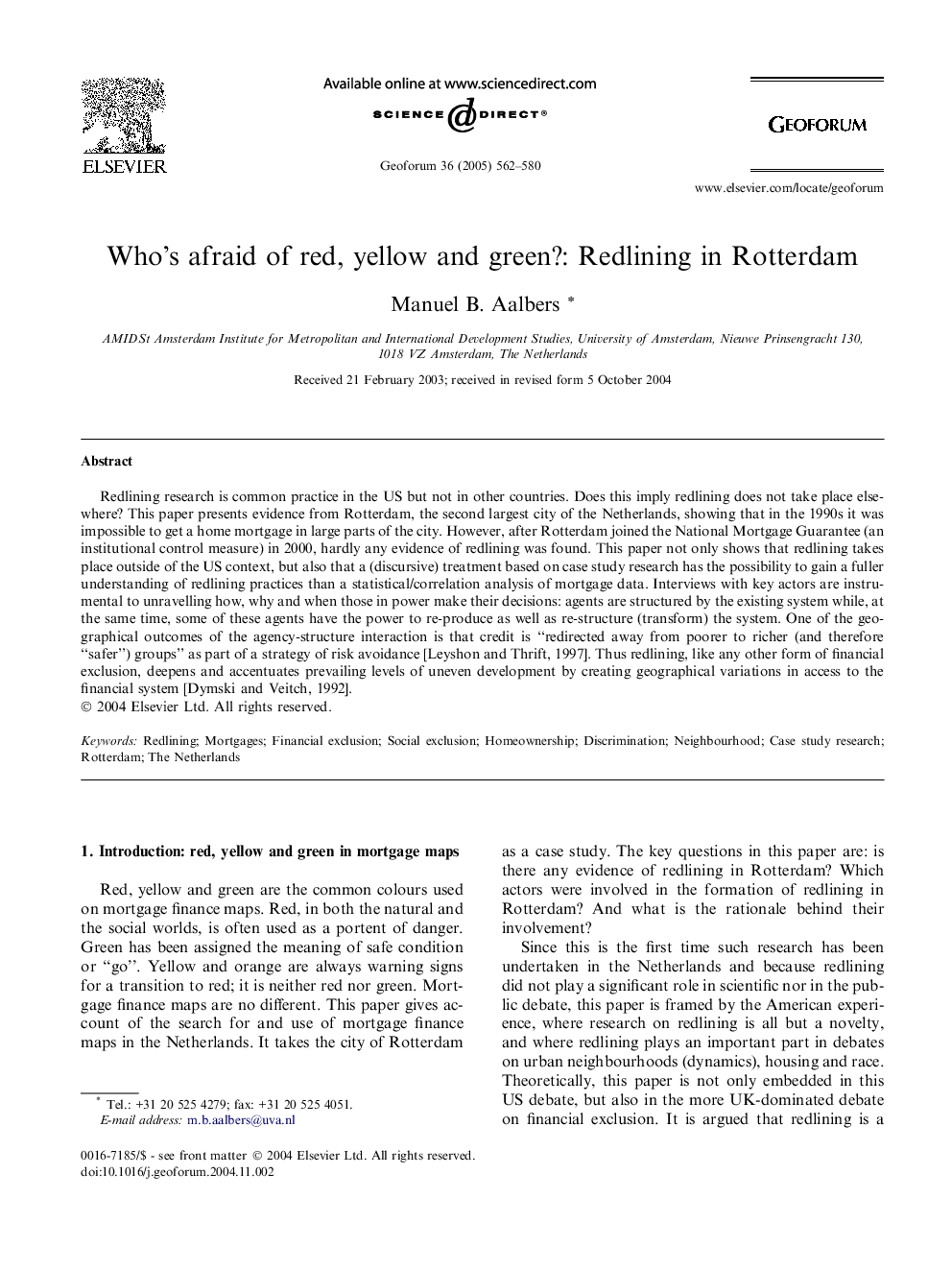| Article ID | Journal | Published Year | Pages | File Type |
|---|---|---|---|---|
| 9552288 | Geoforum | 2005 | 19 Pages |
Abstract
Redlining research is common practice in the US but not in other countries. Does this imply redlining does not take place elsewhere? This paper presents evidence from Rotterdam, the second largest city of the Netherlands, showing that in the 1990s it was impossible to get a home mortgage in large parts of the city. However, after Rotterdam joined the National Mortgage Guarantee (an institutional control measure) in 2000, hardly any evidence of redlining was found. This paper not only shows that redlining takes place outside of the US context, but also that a (discursive) treatment based on case study research has the possibility to gain a fuller understanding of redlining practices than a statistical/correlation analysis of mortgage data. Interviews with key actors are instrumental to unravelling how, why and when those in power make their decisions: agents are structured by the existing system while, at the same time, some of these agents have the power to re-produce as well as re-structure (transform) the system. One of the geographical outcomes of the agency-structure interaction is that credit is “redirected away from poorer to richer (and therefore “safer”) groups” as part of a strategy of risk avoidance [Leyshon and Thrift, 1997]. Thus redlining, like any other form of financial exclusion, deepens and accentuates prevailing levels of uneven development by creating geographical variations in access to the financial system [Dymski and Veitch, 1992].
Keywords
Related Topics
Social Sciences and Humanities
Economics, Econometrics and Finance
Economics and Econometrics
Authors
Manuel B. Aalbers,
